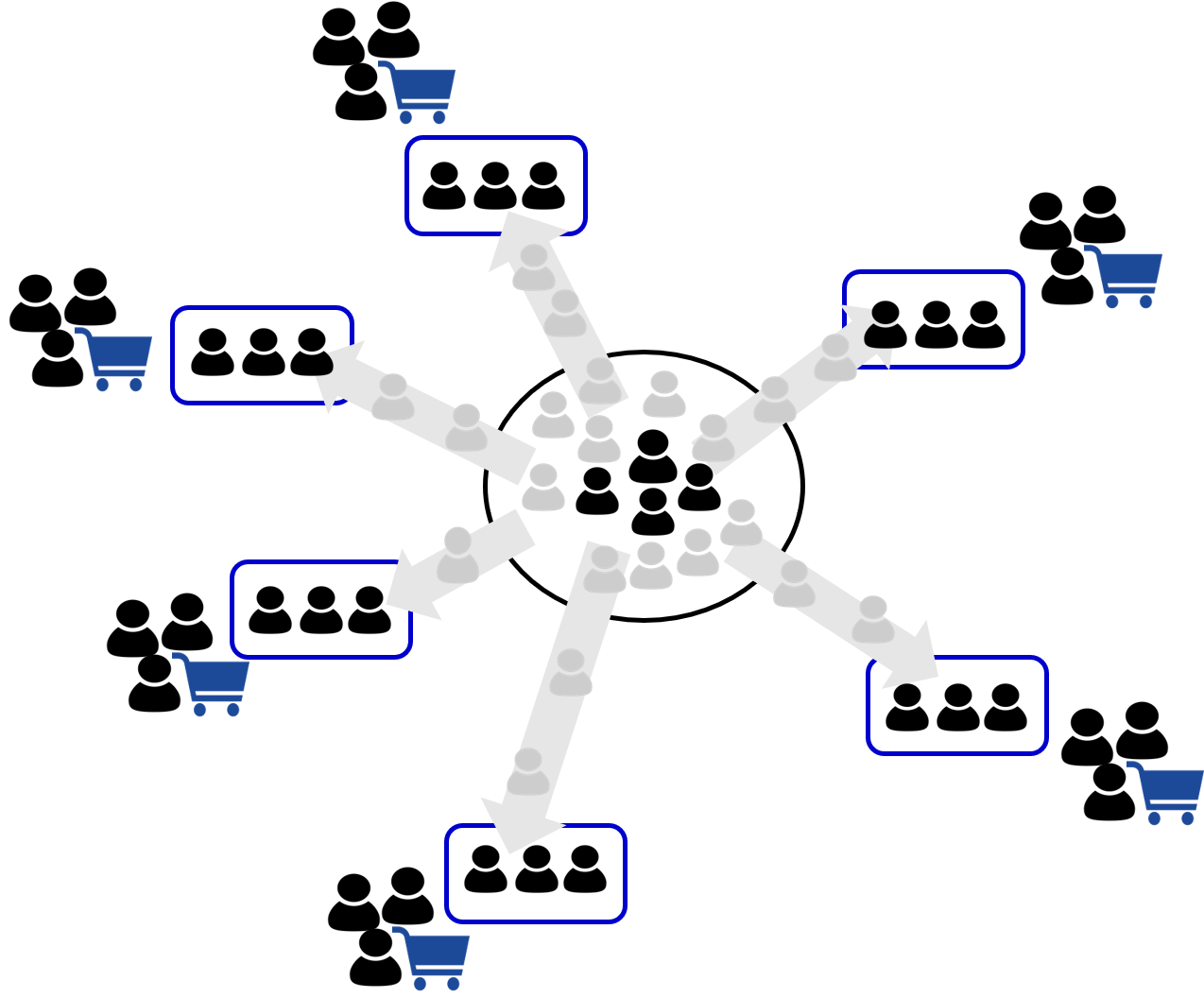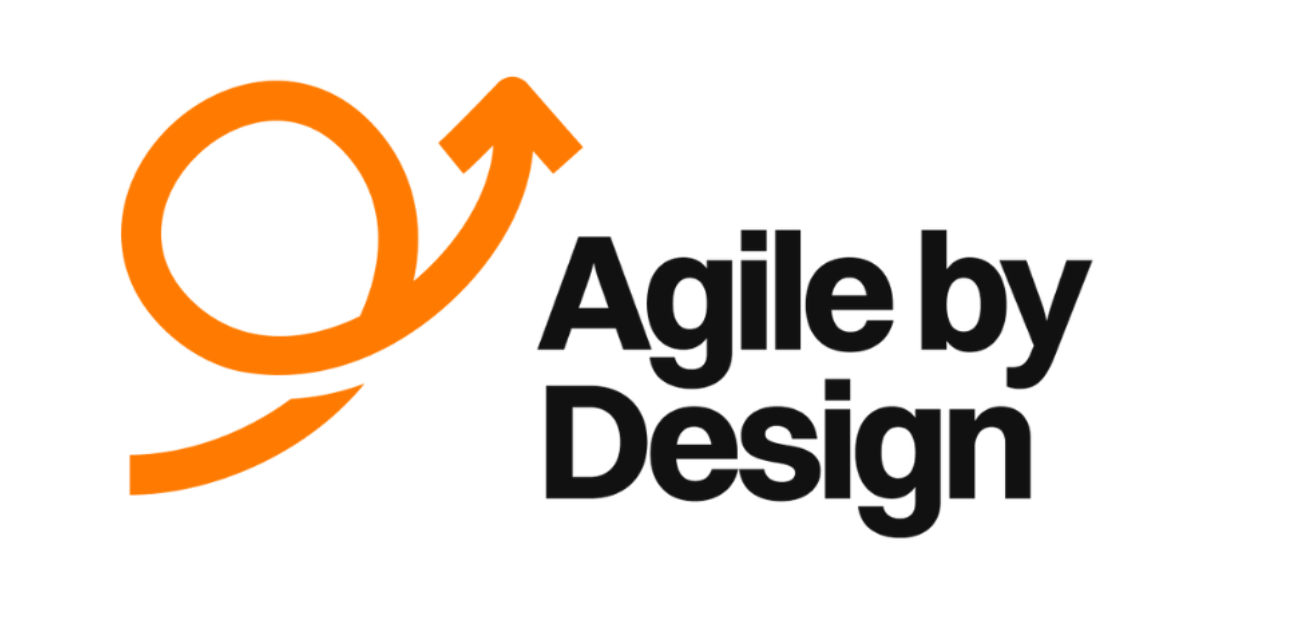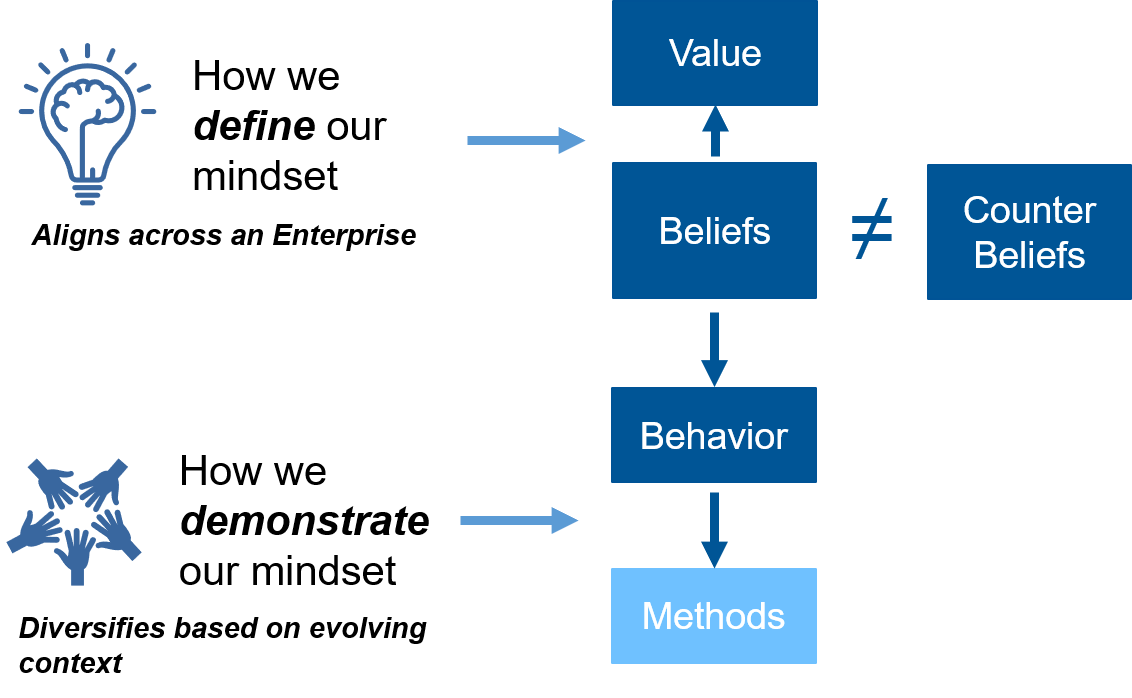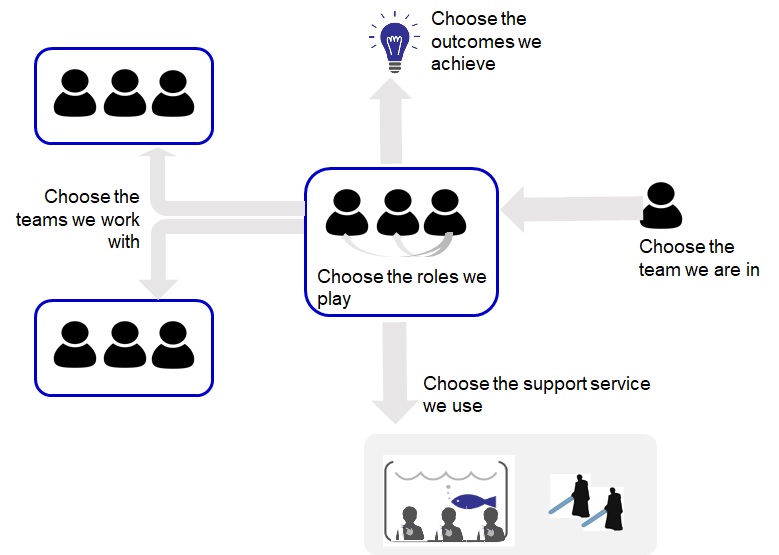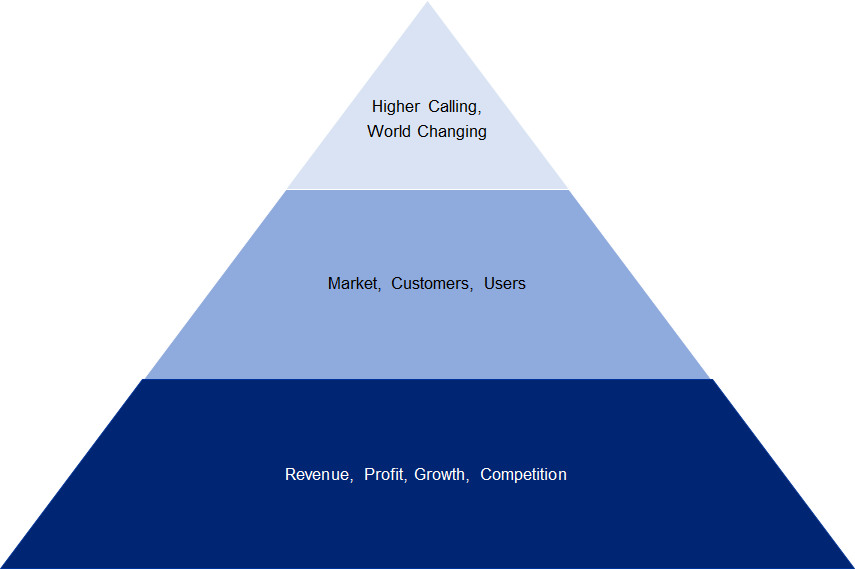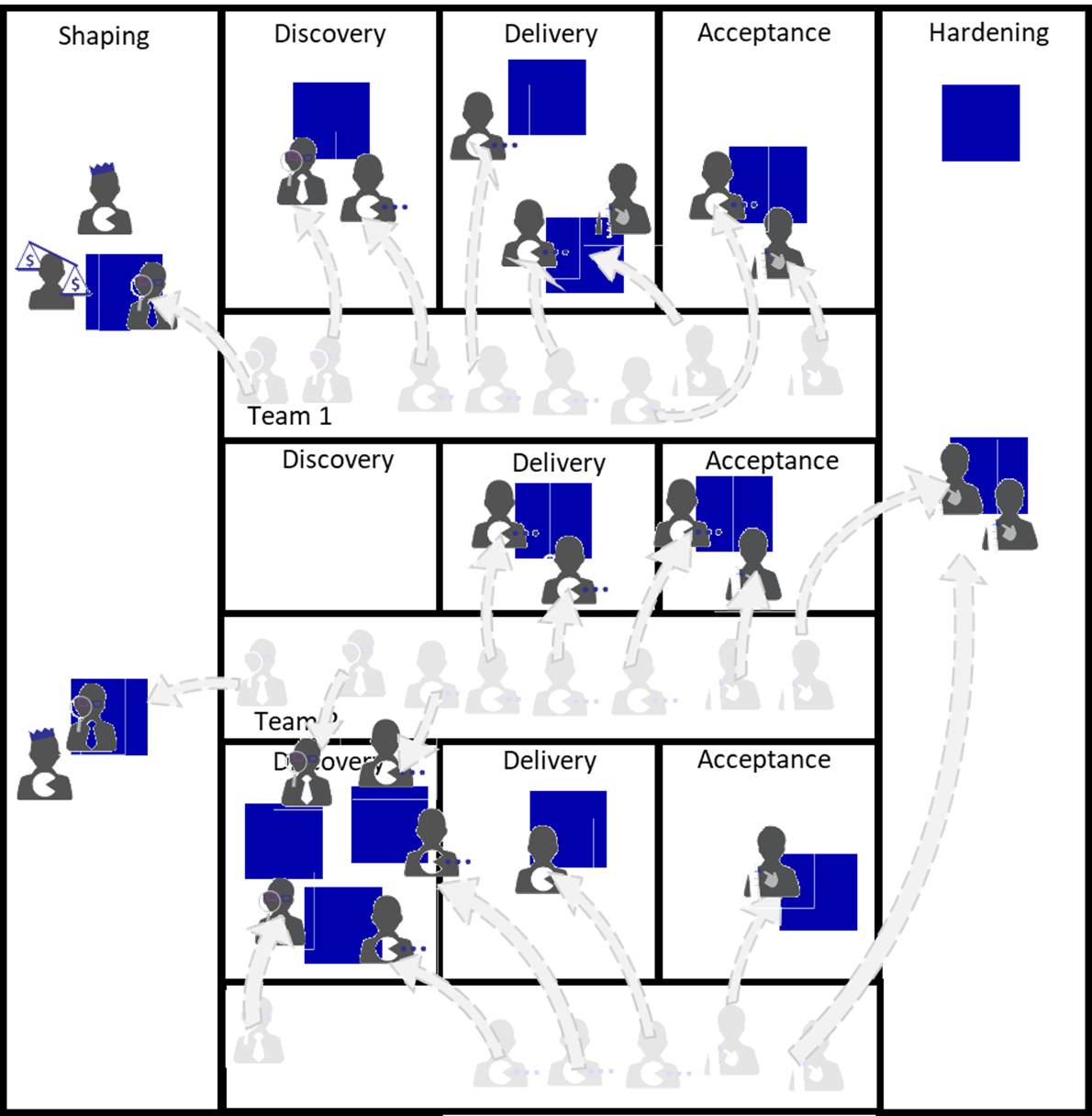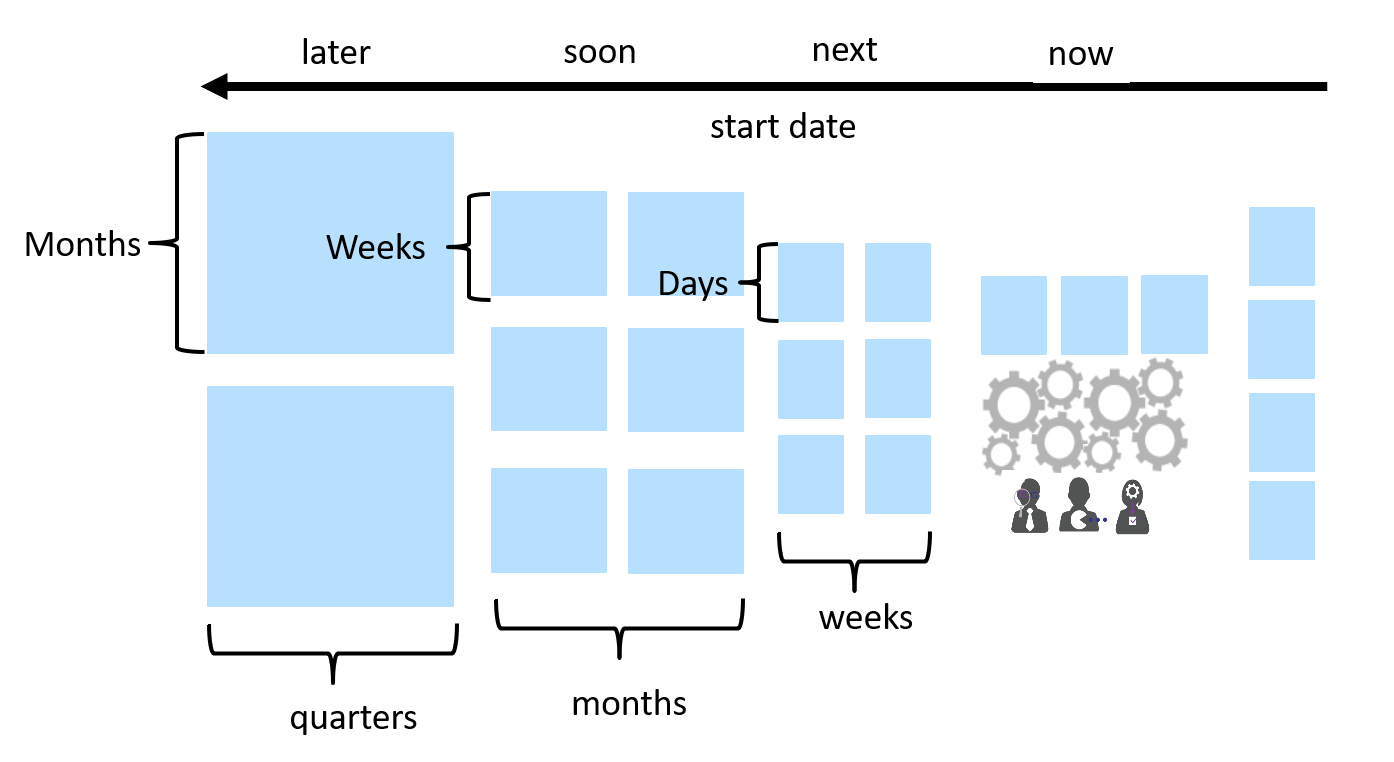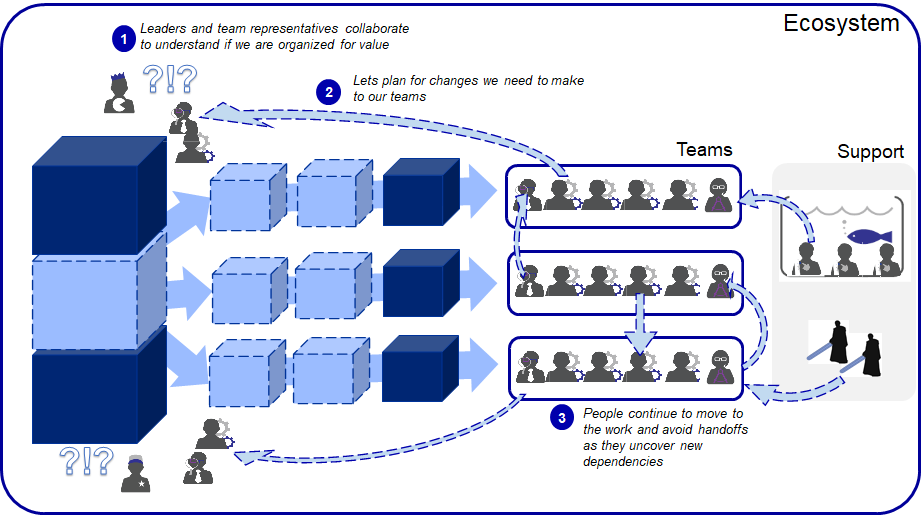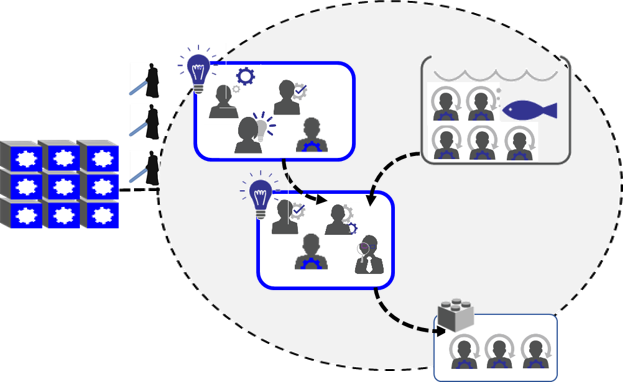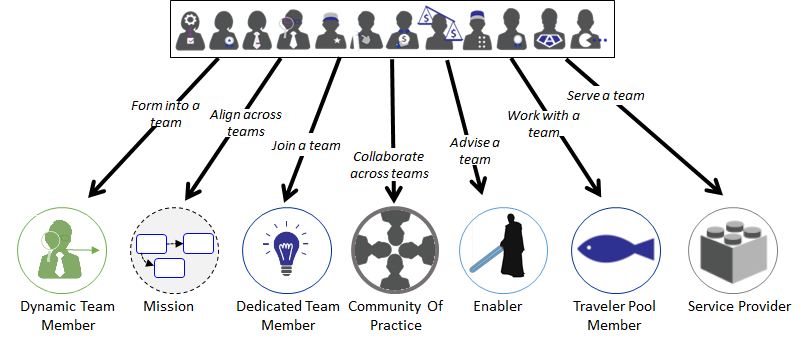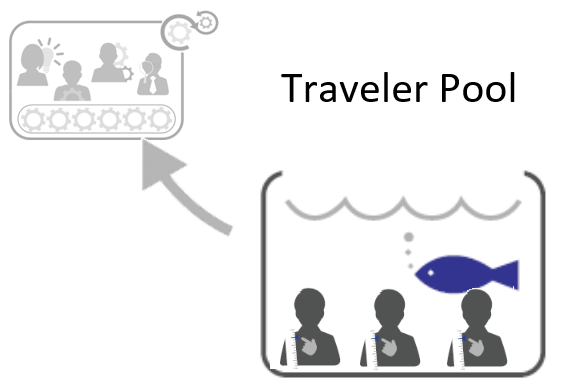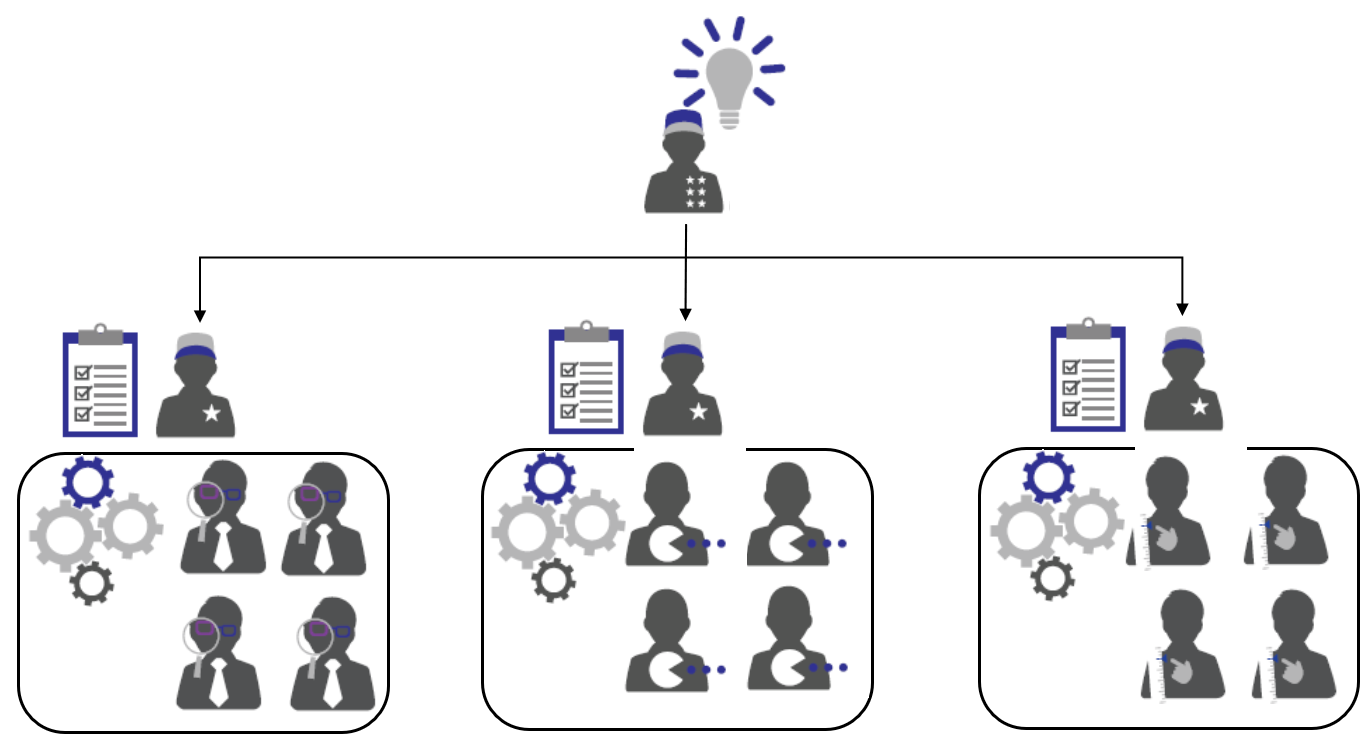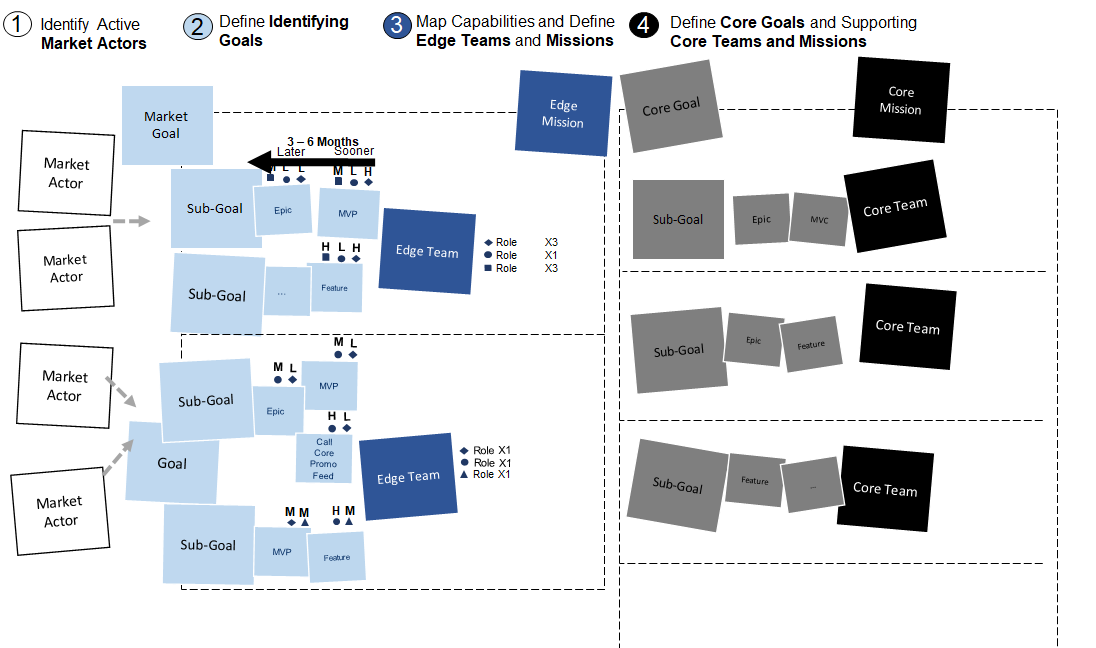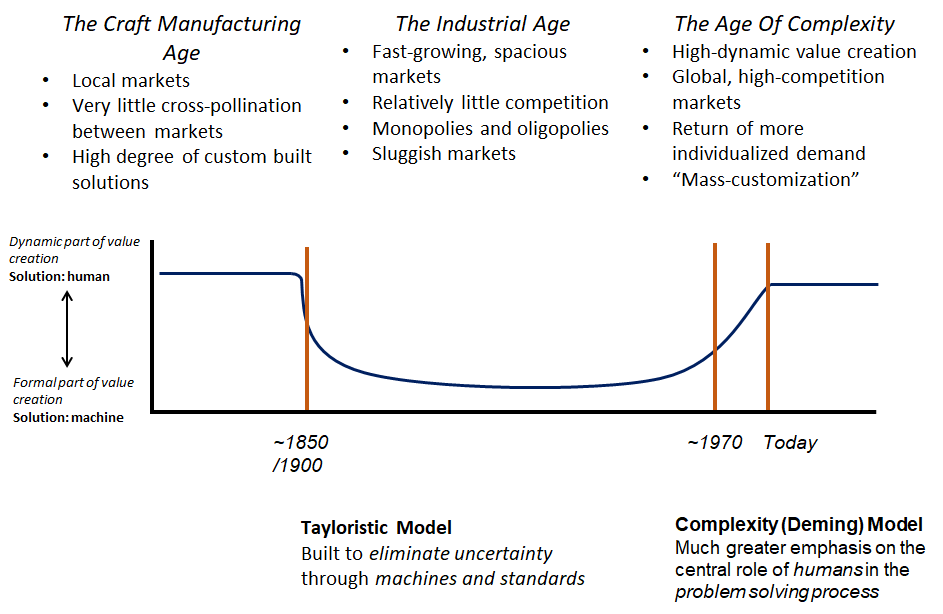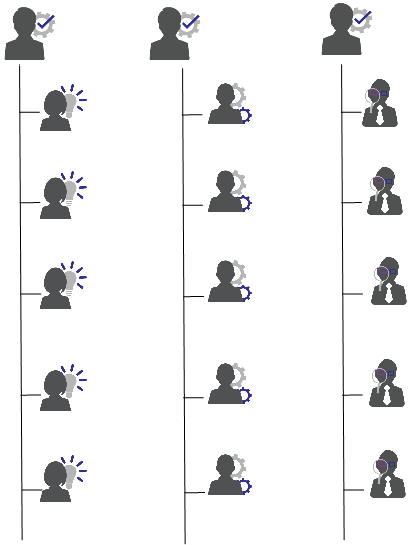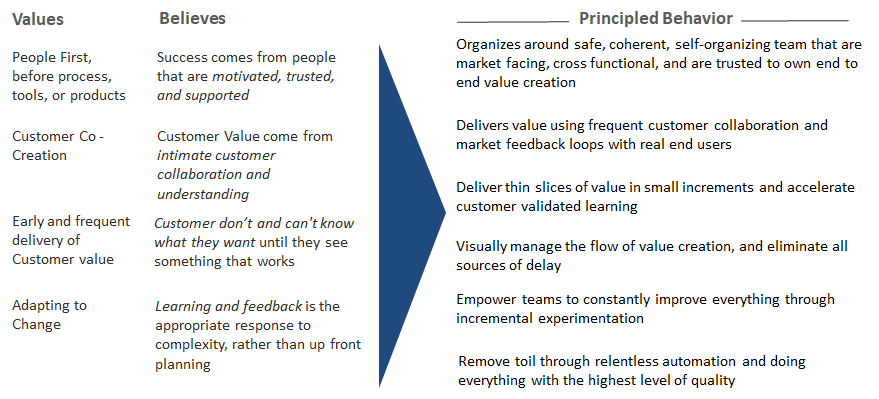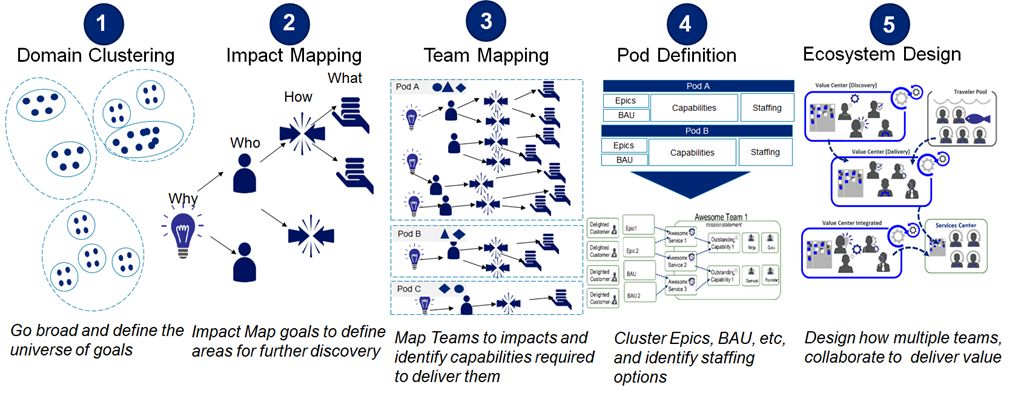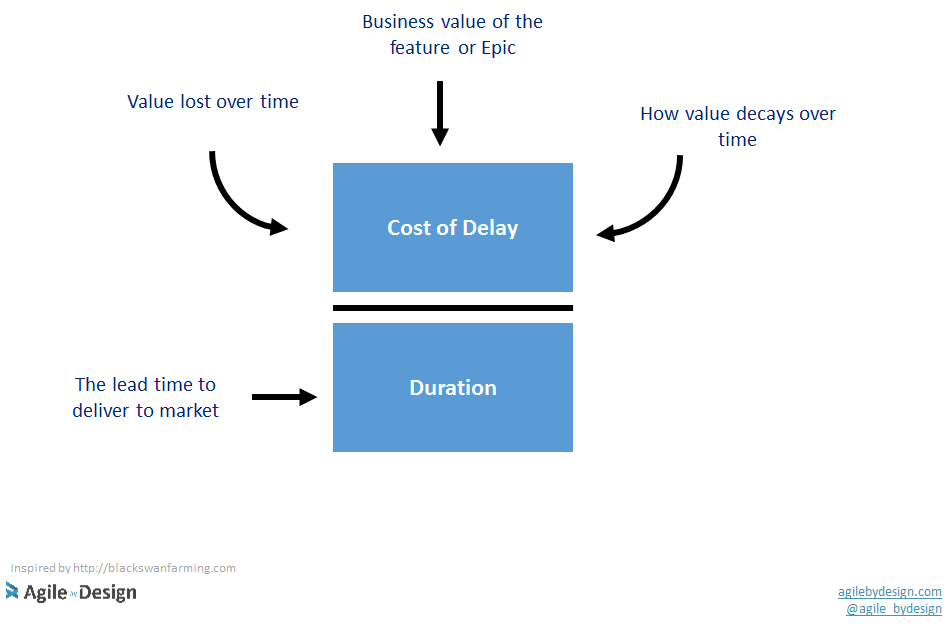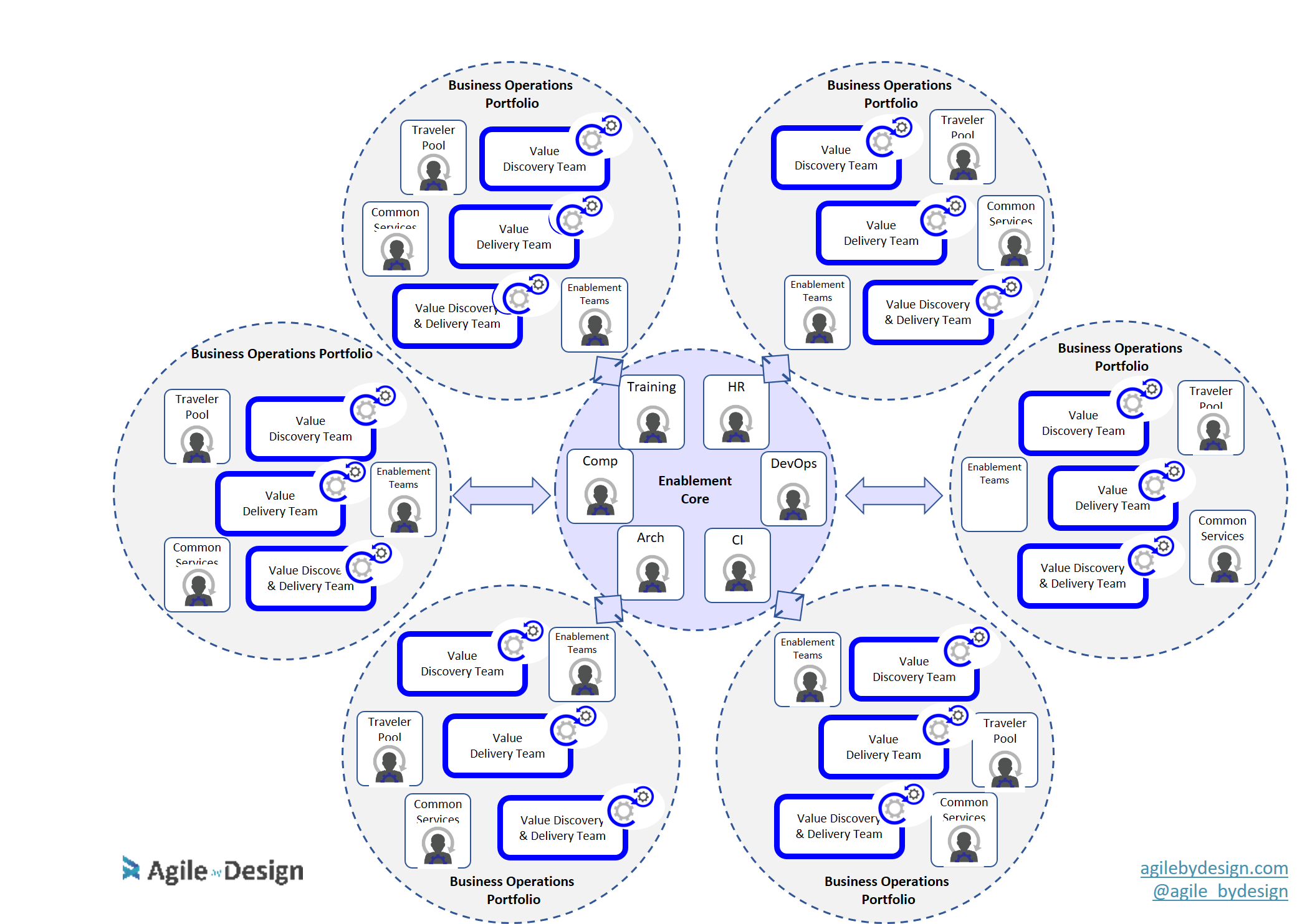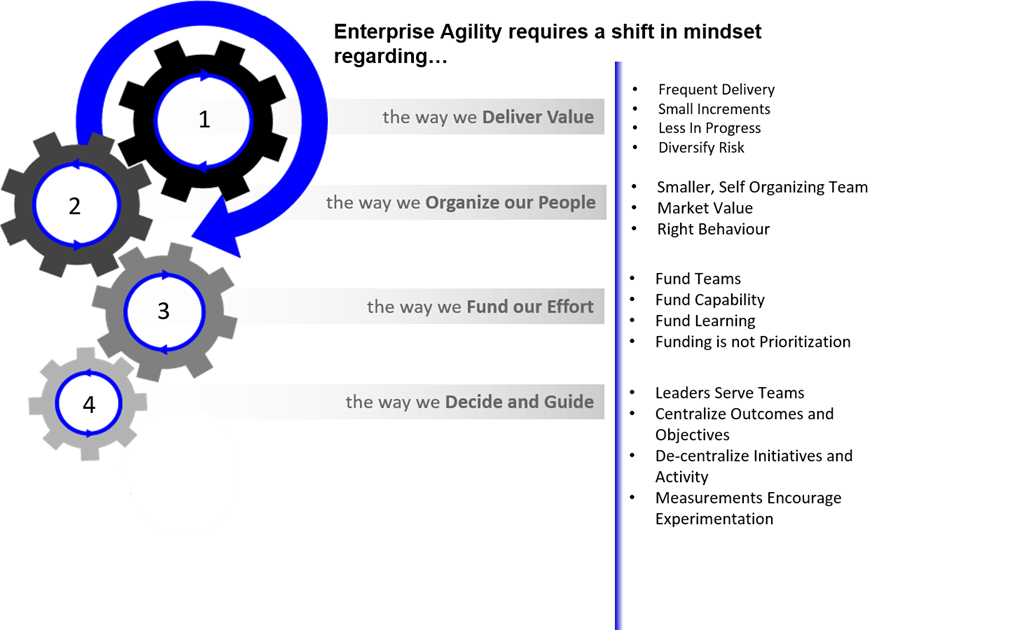There is a wealth of information out there on how we can be bettered organized for the modern era, in the face of constant change. But the information is in a lot of disparate places. This work promises to integrate and extends the material I have found most useful into a cohesive whole. A set of principles and practices geared towards helping people organize towards greater agility. This work incorporates over a decade of experience from my team and I, refining concepts across several dozen agile change initiatives.
I want to take all of the different ideas and experiences that my team has used to help people organize for the future, and get as much of these ideas as I can and present it in one consolidated package. I am hoping this will help others continue to increase the agility in their organization by recasting their organization for the needs of today and tomorrow.
The Traditional Organization is a Relic Whose Time is Long Past Due
The traditional way we think about organizational structure is wrong, completely wrong.
The traditional organization, and its accompanying management system, is based on concepts that are over 100 years old, and is built to meet the needs of the industrial age. The goal of organizations back then was to drive down the price of production, and eliminate scarcity.
The old way of organizing people was to define functional departments based on specialization, then add in layers of management, with explicit spans of control, and define individual account-abilities for each layer and role in your organization. Management could then focus on better procedures and policies in order to optimize efficiency over time.
If your goal was to deliver the same product to the same customers, over and over and over again, and to drive down costs, than this is the way to go. The traditional approach, brought a wealth of goods in to people hands, it created wealth and employment for the masses.

The World Today is A World of Constant Change
But the world looks very different today.
Product life cycle no longer span decades.
Or even years.
Or even months.
And they continue to shrink (compare how long it took for the PCs to become ubiquitous, as opposed to smart phones for a real easy example).
We are in a hyper competitive, global economy. At least most of us are, or will be soon.
The goal now is to provide differentiated products and services to a multitude of distinct customer segments.
And to do it quickly.

Oh and to do it constantly, the next market change is coming faster than the last one. We are in an age of change, an age of uncertainty, an age of complexity.
Organizing Forward: to meet the needs of the modern age
We need a new approach to organizing together to deliver value. We need to get organized in a way that helps us excel in this new era. We need to start Organizing Forward, to meet the need of today and tomorrow.
- Organizing Forward means we organize to maximize our motivation
- Organizing Forward means we organize to increase our autonomy
- Organizing Forward means we organize to accelerate our learning and feedback
- Organizing Forward means we organize using the collective brains of every one involved
- Organizing Forward means we organize to foster resilience in the face of constant change
The Need to Constantly Organize Towards Greater Agility
In a nutshell Organizing Forward is about arming everyone in an organization with the mindset and skills required to continually organize towards agility. Note I used the word toward. That is because agility is not something you can achieve as an organization, it is not a static goal. Agility is something an organization increases over time, or conversely, reduce. Successfully organizing towards agility requires constant attention, once we lose focus, we can expect organizational agility to erode.

Does Organizing Forward sound hard to do? It could be simple. The good news is that you can start organizing forward regardless of context. It can start with you. Organizing towards greater agility is not about reaching some mythical, unattainable target state you see published by some expert. Rather, it is about going about to do the work necessary to make progress, any progress, regardless of the scope, maturity, complexity, domain, or existing permission.
In Organizing Forward, I will share a collection of principles and practices to help you support your organization to continually move towards greater agility. I'll provide you with both thinking tools and design skills to help you co-create and iterate new organizing structures. I will share stories of how I have worked with my team at Agile By Design to incrementally shift the way we organize our people from the traditional model to a model suited for complexity and growth.
The Agile Team is a key inspiration for Organizing Forward
Core to organizing towards agility is the concept of an Agile Team. Organizing a cross-functional group of people into a team and asking them to transparently deliver value in small increments are incredibly powerful ideas. Powerful ideas that we can use to form the basis of how we want to organize our people.
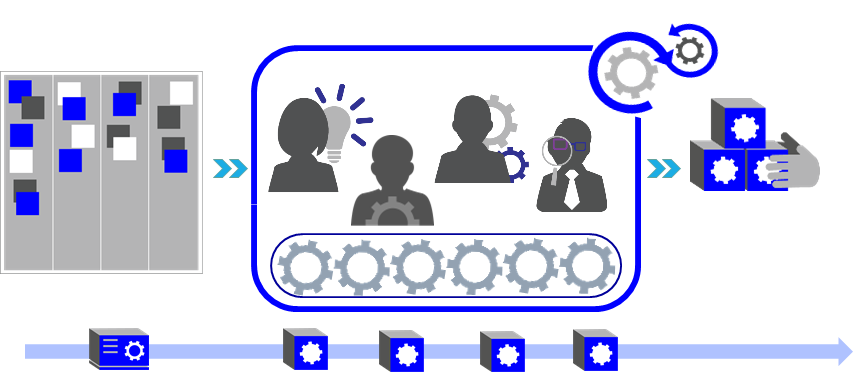
But Most Agile Transformations Fail
But too many organizations get very little value out of this thing we call Agile. Too many agile organizational transitions fail. Most agile transformations start on the wrong foot. Often we see a big emphasis on using agile to change the way people work. New methods and practices are introduced. Rarely do we see a focus on making meaningful change to the way people are organized. We see very little attention paid to changing organizational structure, changes that increase autonomy, enable self-organization, increase feedback, and maximize purpose.

What many fail to realize is that Agile methods will offer very little value to an organization that is structured around silos, that is inward facing, that structured through command control. I loved a recent post by Jem 'Jelly' recently, in which he compares adding agile methods to a traditional organization akin to being asked to transform a concrete car park into a Chinese garden, while only being allowed to beautify the concrete car-park, with no structural changes allowed.
Many transformations operate under this falsehood that Agile methods will help organizations structured around command and control to demonstrably increase their agility. In fact the opposite is true, agile methods work well when organizations restructure with an eye towards decentralization and autonomy, with the goal of enabling self organizing teams. Well formed structure can enable collaboration, it can promote independence and ownership. Structure, created with the right mindset, by the right people (hint as many people as possible) can promote a change in culture.
Organizing Forward: Your Handbook to getting organized in the face of uncertainty
Organizing Forward is dedicated to helping you get organized in the face of uncertainty. You don't need to be in a position of senior management to get started. The techniques I'll share can help at both smaller and larger scales, and the principles are universal regardless of the scope of the change, from team to enterprise. This book will discuss different ways we can change the way get organized, paying attention to the following principles:
1 - Organize For Purpose

Organizations with strong purpose perform better than organizations who's purpose is weak or poorly understood. When people organize around a strong purpose, then motivation, autonomy, self - organization, etc all become a matter of course. The traditional approach to organizing our people is to create structure based on functions, skills, or capabilities. Most people's outcomes are inward facing, ie output more stuff from a capability. Organizing towards agility means that we organize around outcomes that matter to the market, outcomes that impact customers, and outcomes that impact people external to our organization.
This orientation has a profound impact on our organizational structure. Purpose driven organizations place an emphasis on creating structure around teams that are cross-functional enough to achieve market outcomes that fulfill an organization's purpose. Teams are connected directly to the market they serve, and are empowered to interact with the market actors who are necessary to achieving the organization's purpose.

A natural consequence of organizing for purpose is structure becomes increasingly decentralized and autonomous. As we place more people into market facing, cross functional teams, we also place more and more autonomy on those teams to accomplish the market outcomes required to fulfill an organization's purpose. A purpose driven organization no longer makes decisions from the center, in contrast decisions are made by the people in direct contact with the market. The center shifts from command and compliance to supporting and enabling capability.


2 - Organize Through Choice
Most agile transformations start on another wrong foot. They begin with an act of command and control. We start by pushing people into a team. We tell them what to work on. We push an agile coach on them who tells them to do agile, likely scrum, maybe safe. Then we wonder why they are not self organizing. We have given them accountability without giving them responsibility, responsibility to choose.
One of the most powerful concepts coming out the BetaCodex community is the idea that real change can only happen through invitation. We can never motivate others to change. We can only improve the invitation, or alter the environment. Motivation always comes from the person accepting the invitation. Motivation is a choice.

Choice, is a foundational, it seldom talked about pillar behind by why Agile works. Agile done well, increases transparency and feedback. We use both of these to increase the amount of choices people can make. We can use organizing structure to maximize the amount of choice people in our organization can have. Organizational agility increases dramatically when people can choose the roles they play, the teams they belong to, and even the outcomes that will achieve an organization's purpose. Organizing through choice means we use power of invitation rather than a legacy of control to collaborate with others.

3 - Organize Around Flow Of Value
Another agile transformation miss is placing all the focus on classic agile teams, with a stable and often static roster of people. But traditional agile teams are at best a partial fit with the realities of many large enterprises of today. A world of constant uncertainty demands that we look for different ways to flex the way we are organized. People in a flow oriented organization constantly look for different ways to come together to deliver value. People figure out how to dynamically team in a way that transcends across official organizational structure, including team structure. Flow driven organizations are able enable self - organization at larger scale.

A big contributor to organizational flow is minimizing hand offs between teams. We can avoid many hand offs by re-teaming around value. We can also change the way support teams assist market facing teams. In traditional organizations most support work is accomplished by sending work to support teams. When we organize around flow of value, we encourage support workers to move to teams to do support work.

4 - Organize to Context
Another problem many organizations run into when adopting agile is they attempt to roll out a standard agile methodology and operating model. An underlying attribute of Organizing Forward is that decision making is based on feedback teams get from interacting with market actors. This means that as we Organize Forward, we increasingly decentralize decision. to teams. This decision making means that teams now have the freedom to, and indeed are expected to organize according to their unique context. People must have the freedom to organize in a way that is Fit For Purpose.

Organizing to context also means people organize according to various social boundaries to increase social cohesion across a group of teams, and conversely organize according to discrete domains to more effectively decouple from other teams.
A Brief Note On Sources Of Inspiration
There is a good deal of content on the subject of how to better organize with agility in mind. Having spent over a decade working on the subject, I have had to pull on a lot of these different sources of content. I have invented very few ideas, but rather integrated them together. If you are interested, have a look at some of the key influences:
Sources of inspiration mentioned above include:
- David J Anderson's Kanban method, specifically using Kanban to perform long term planning with an eye to managing the dynamic formation of feature teams, and allocation of specialist pools
- the works of Donald Reinertsen, who's principles of flow shape many of my thoughts, but especially the idea that process and organizational structure can be defined based on reusable patterns, like the classic GOF Patterns do for programming.
- Jurgen Appelo's Management Books, especially his thinking on flatter organizations, wide job functions with narrow roles, and informal leadership
- The LeSS concept of a traveller
- Beyond Budgeting in general; it's principles, concepts and values
- the Oreilly books on Micro-Service Architecture and Build specifically where they intersect with concepts from Eric Evans Domain Driven Design, eg: Bounded Contexts, Domain Aggregates and Context Integration patterns to help teams align to solution architecture
- A special mention goes to Organizing for Complexity by Niels Pflaeging. specifically the foundational organizing structures that foster agility, as well as the participatory, invitational approach to organizing people.
- Corperate Rebels an ambitious book that uses real world examples to provide narrative that is both compelling and convincing. Organizations can work differently. We can achieve autonomy, purpose, mastery, and trust. We can re-write corporate DNA into something new.
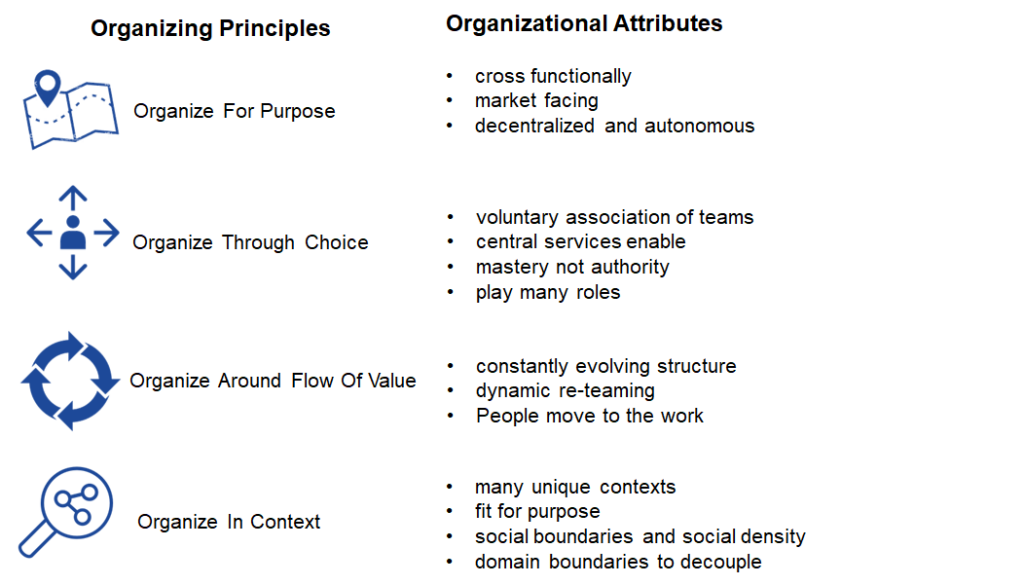
The concepts from all these sources work amazingly well together, but it can be a tough slog for many to read all of this. It took a decade for us to read it, try it, synthesize it, and learn from it.
Hopefully my work will be a more approachable, integrated path to getting a handle on all of this amazing content, all with real examples and lessons learned! I think these concepts can be learned and even mastered (if mastery in this domain can really exist) in a much shorter period of time, and I want this work to help.
Read this work as it is being written in real time
The book is in a fairly decent draft, but is currently based on a previous set of agile organizing principles, that were to mechanical, to wordy, to inward facing. They were to focused on how to organize, not why to organize. This article is based on a new set of principles that I hope improve all of this, with a stronger emphasis on values, on mindset, and promise to be more inspiring. Over time I will be taking a comprehensive second pass on the book, and incorporating these principles into
Get the book (current draft) here.
I can be reached at
jeff.anderson at agilebydesign.com







